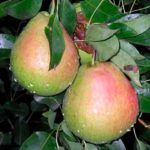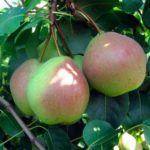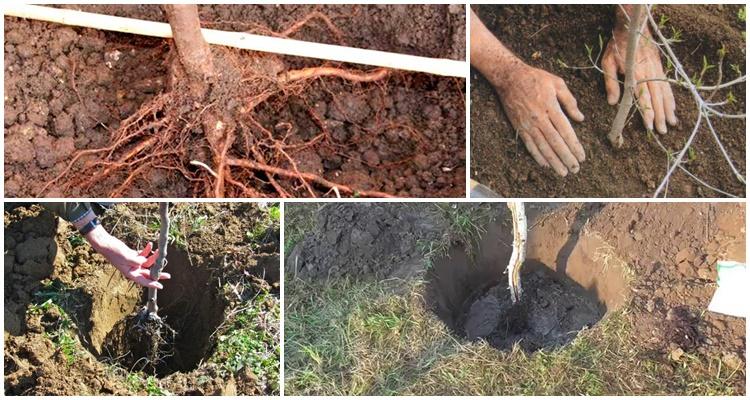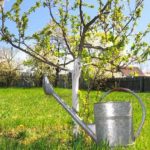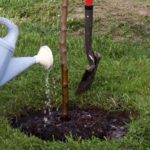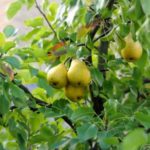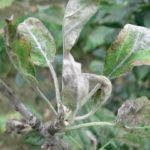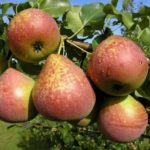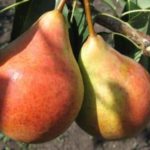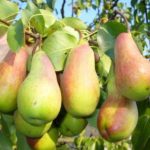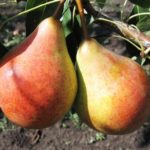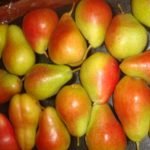Many people like sweet pears. Breeders have developed many varieties with sweet fruits for growing in garden plots. Let's look at the description of the Dessert pear, its pros and cons, the nuances of cultivation, and care recommendations. How to protect pears from diseases and pests, when to harvest, how and how long to store the harvest.
History of creation
The autumn variety Dessertnaya was bred in 1952 at the Rossoshanskaya horticulture station.For crossing, the summer variety Forest Beauty and the winter Bere and winter Michurina were taken. The variety is zoned according to the regions of the Central, Central Black Earth and North Caucasus regions.
Main characteristics and description of the variety
The beginning of ripening of fruits of the Dessertnaya variety is the beginning of September. It continues until November. Ripe pears are beautiful - yellow with a pink blush. Weight – 150 g. The taste is sweet, which corresponds to the name of the variety. Pears are tender, juicy, with thin but dense skin, suitable for transportation and storage. During storage, the taste and aroma of the fruit do not change.
Positive and negative sides
The nuances of growing Dessert Rossoshanskaya late pear
1- or 2-year-old seedlings are planted. Older trees take root less well. Select only healthy, well-developed seedlings, with a dense root system, with even shoots, covered with smooth, undamaged bark.
The day before planting, the seedling is prepared: the tips of the roots and the tops of the shoots are cut off by 1/3. Then the roots are soaked in a solution of a root formation stimulator. Treatment accelerates the growth of new roots and reduces the rooting period.
When and where to plant
Dessert pear seedlings are planted in spring or autumn. In the spring - before leaves bloom on the shoots, in the autumn - after leaf fall, that is, during the plant's rest.
For planting, you need to choose an open, sunny place, protected from the wind. You must retreat at least 2 m from fences and buildings.
The soil is prepared shortly before planting the seedling. They clear the area of plant debris, dig it up, dig holes for planting - with a depth and diameter of at least 0.7-1 m. A layer of drainage is poured onto the bottom, and on top of it is a layer of humus and ash mixed with the same amount of excavated soil.
Landing rules
The roots of the plant are lowered into the planting pit and spread evenly throughout the volume of the pit. Sprinkle with earth and compact it. Water with 1-2 buckets of water, sprinkle with a layer of dry soil and mulch. A peg is placed nearby, to which the trunk is tied so that the seedling does not lean to the side.
Recommendation for crop care
Immediately after planting a Dessertnaya pear seedling, caring for it begins. Both young and mature trees require constant care. It needs to be watered, fertilized, pruned, and ensure that the trees remain healthy and pests do not multiply on them.
Watering and fertilizing
A young seedling of Dessertnaya is watered frequently, so that rooting goes well, you need to keep the soil moist. After rooting, water once every 2 weeks. In the fall, water-recharging irrigation is done. Mature fruiting pears are watered if the soil is very dry. Trees especially need moisture during fruiting. In hot weather, if there is not enough moisture, the pears will be small and dry.
Watering can be combined with fertilization. Dessert pear accepts organic and mineral fertilizers well. Trees are fertilized at least 3 times per season: in spring, after flowering and in the middle of the period of fruit formation.At the beginning of the growing season they need nitrogen, then phosphorus and potassium become the main elements. They use saltpeter, urea, superphosphate, and potassium salts. From organic matter - rotted manure, compost, wood ash.
Pruning and wintering
Pruning is carried out in the fall, when cleaning the garden, or in the spring, when the weather warms up. Cut out all dry branches affected by diseases and pests, healthy but unnecessary ones that grow inside the crown. After pruning, the trunk and lower parts of the skeletal branches are whitened with lime. For the winter, cover the tree trunk circle with mulch of straw, hay, and dry leaves. Mulch will protect the roots from freezing. In the spring it is replaced with a new layer.
Pests and diseases
Dessert pear is resistant to fungi, but it will not be prevented by preventive spraying with fungicides in weather conditions conducive to the proliferation of pests.
Sweet pear may suffer from ant infestation. Treatment with insecticidal preparations helps against insects. You can also put a hunting belt on the trunk and place baits and traps.
Harvest and storage
Dessert - an autumn variety, the fruits are harvested slightly unripe and sent for storage. They can be stored in a cool, dry, dark place throughout the fall and early winter. They are placed in shallow boxes in 3 layers maximum, with paper placed under each layer. During storage, the fruits are sorted out, rotten or wilted ones are selected.
For fresh consumption, ripe pears are picked when they turn yellow, acquire a characteristic aroma, and the flesh becomes soft and sweet. They are used to make preserves, jams, and other sweet-tasting preparations.
Dessert pear is known for its sweet, fragrant fruits. This is an autumn variety, so they are suitable both for consumption immediately after collection and for storage.Dessert is an excellent variety for growing in private gardens for home consumption of the fruits.


